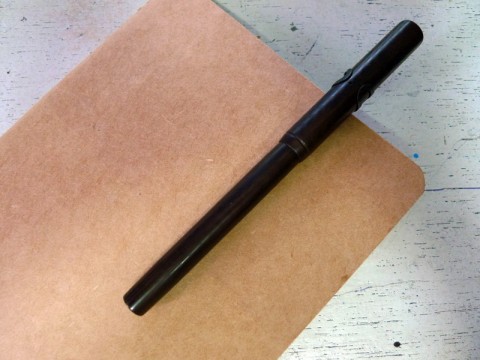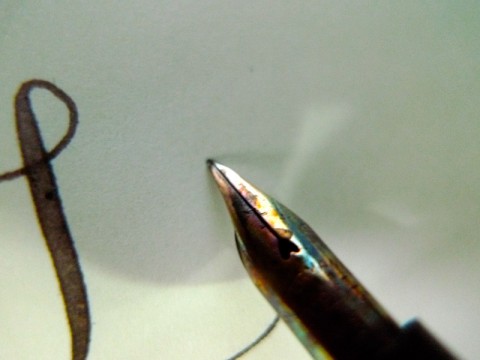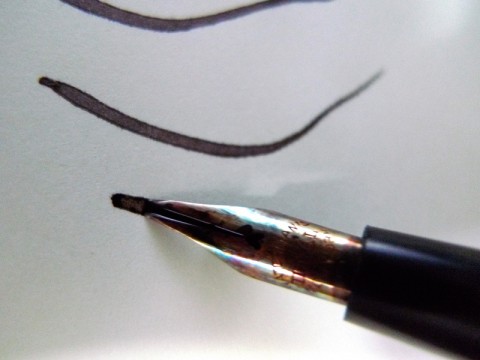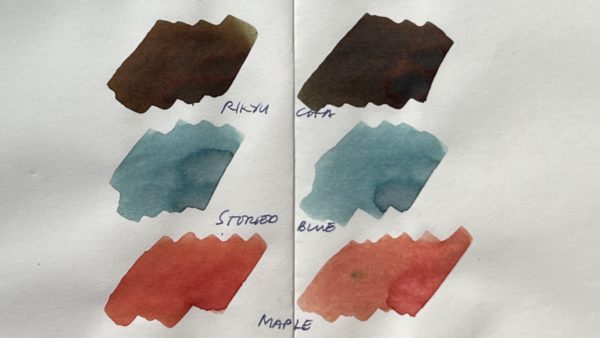The first fountain pens were eyedroppers. The entire barrel held ink. I expect this was a relief to scribes weary and wrist-sore from dipping nibs into inkwells. (Centuries before that paper from plants rescued generations of goats from becoming papal bulls. Science, ever forward!)
The Waterman 12 is a slim eyedropper. It was quite popular in its time. It’s not as expensive as other vintage pens, and can often be found for considerably less than a hundred dollars. The nibs vary in flexibility but I have yet to encounter one that does not flex. If you’re in the market for a starter flex pen then keep an eye out for the Waterman 12.
Mine has a simple, sturdy accommodation clip.
The nib is a Waterman’s Ideal New York #2, and it has eye-popping flex. The tines spread and spring back easily, and the controlled flow makes for fine lines, not overwhelmingly wet, with obvious shading on downstrokes.
Flexible nibs demand respectful use. With too much pressure over time, tines will refuse to return to their original shape.
Can you gauge if a nib is flexible just by looking at it? Sometimes you can. The classic shape has long tines that come to a fine point, and narrow shoulders.
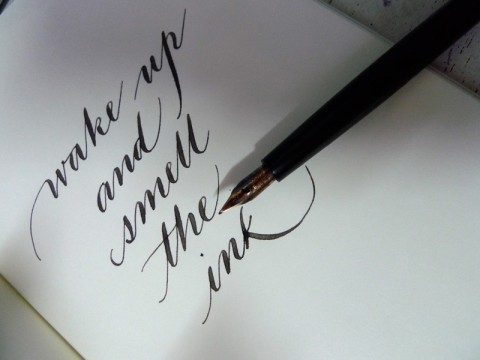
Inky fingers are a given with this pen. I don’t mind being inky. I like to think scribes and illuminators went around with iron gall stains and specks of gold leaf on their hands with pride, and so do I.
